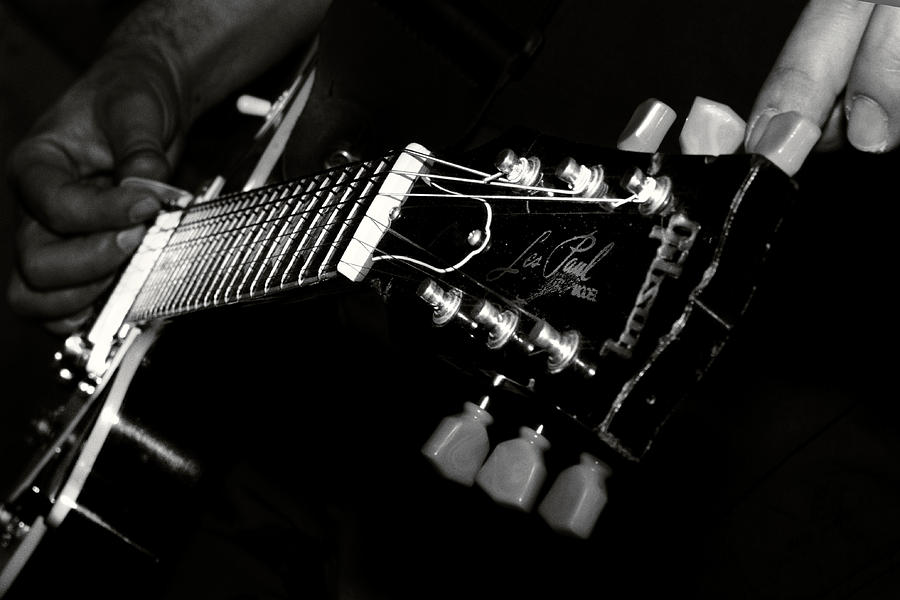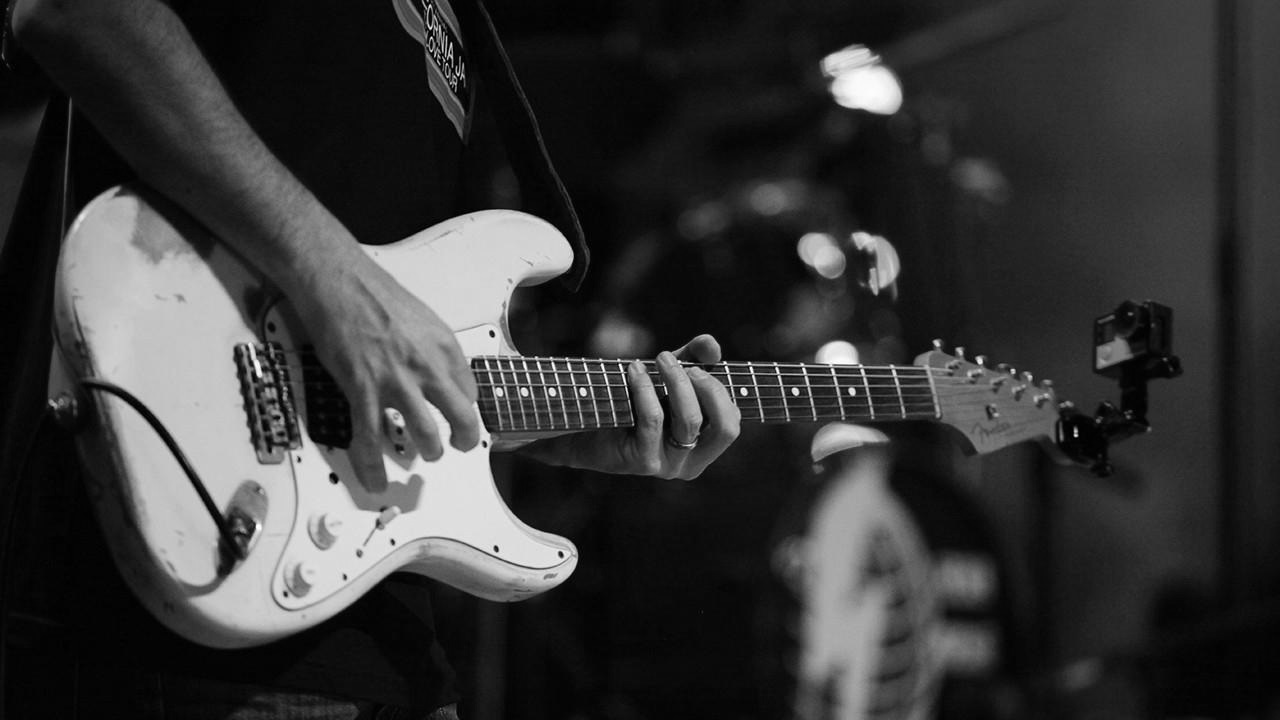I’m not a huge fan of the CAGED System, but I am grateful to its existence because it forced me to come up with Hacking the CAGED System, which is an alternative, and in my humble opinion, more usable system designed for anyone who’s stuck with the original CAGED System, or wants an approach with a better balance between the shapes and the theory behind them. However, in this post we’ll use the original CAGED chord shapes and combine them with a simple technique to get some sick-sounding outside lines going.
This is one of my favorite ways to come up with sick-sounding lines while using an approach based on chord tones rather than scales. It’s another simple idea which has plenty of mileage.
Let’s start with the CAGED E shape chord, or in less confusing terms, an A Major barre chord.

And place a note either side of each chord tone as follows:

You now have access to some twisted sounds to play over that A Major chord, as well as the chord tones at your fingertips to resolve your outside excursions. I find these patterns especially useful for vertical runs with the chord tones providing a ‘safety net’ just a semi-tone away.
You can do this with virtually any chord, making sure you keep your mind’s eye on the actual chord shape, or think, ‘middle finger = chord tone’ if you’re using strictly your first, second and third fingers.
Here’s the C shape chord, or to avoid confusion, another A Major chord:

And here are the rude notes:

This idea is based on the principle that you’re always a semi-tone away from a good-sounding note, or you can avoid a good-sounding note in favor of dissonance by also moving a semi-tone up or down. As mentioned, at first you’ll probably use your first three fingers with your middle finger always being on a ‘good’ note, but once you start getting comfortable with the ‘outside’ tones, you’ll start to change your fingering to accommodate more adventurous outside excursions.
Here are the other CAGED major chord shapes for you to experiment with (remember these are all A Major Chords despite the confusing CAGED System terminology):
G Shape Chord (chord tones in red)

A Shape Chord (chord tones in red)

D Shape Chord (chord tones in red)

If this is the first time you’ve tried outside playing, don’t expect amazing results after five minutes. Spend a little time playing through these patterns as some are easier to work with than others. Once you’re able to come up with some sick-sounding stuff, move on to the minor chord shapes.
If you like this approach to improvisation, check out the Soloing Without Scales book which includes this concept and many other non-scalar approaches to soloing on guitar, and includes 15 backing tracks.



